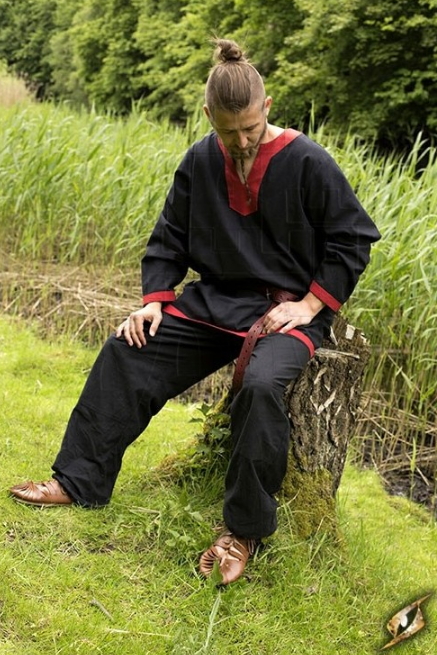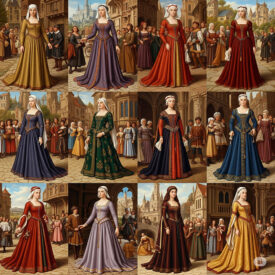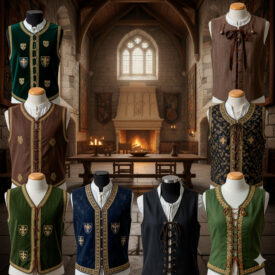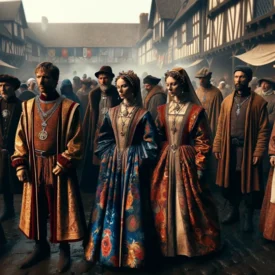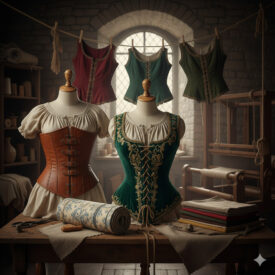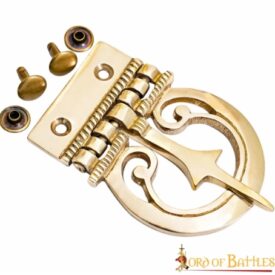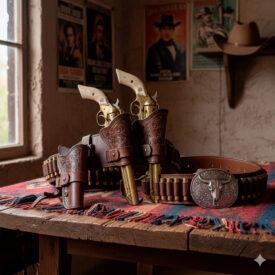Did you know the tunic was the daily garment of entire civilizations and that today it still inspires fashion, historical reenactment and theatrical costume? In this article you will discover why medieval tunics endure, how they varied by period and sex, which fabrics and details to look for when choosing a good tunic, and where to find them for historical or modern use.
Origin and evolution: from antiquity to the Early Middle Ages
The tunic is one of the oldest garments in the human wardrobe. From Hebrews, Greeks, Egyptians and Romans to the Knights Templar, the tunic has been a staple. It was put on over the head and fastened to the body with a belt, varying in length and sleeve style according to custom, status and function.
In Antiquity, the tunic was the usual outer garment. The Romans wore it in different lengths: short for work, long for ceremonies. In the Middle Ages the piece evolved but kept the basic idea: a loose fabric with a head opening and often belted at the waist.
Shapes, lengths and gender differences
Variations were simple but meaningful: for men, the tunic usually reached the knees or mid-calf; for women it was longer, down to the ankles. Sleeves could be narrow or wide; some versions included capelines or hoods for cold climates.
Construction was practical: one or two pieces of fabric sewn with side seams or in a T shape. The simplicity makes it easy today to reproduce historical models with few patterns and is one reason the tunic endures as a tailoring and textile craft project.
Fabrics and decoration: wool, linen and silks
Materials marked social and functional differences. Wool and linen were the most common fabrics due to availability and thermal properties. Silk was reserved for the elite for luxurious or ceremonial tunics.
Among the Anglo-Saxons of the Early Middle Ages, for example, it was common to decorate collars and cuffs. These decorations could be simple embroideries or woven bands; applications and strips of finer fabric were also used to denote status.
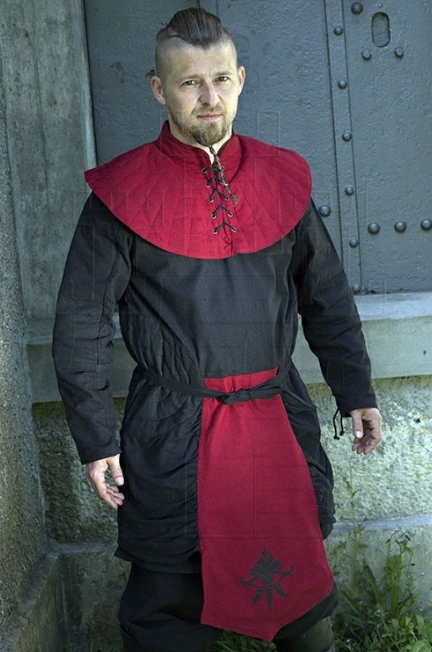
The tunic in daily life and in war
In urban contexts, the tunic was combined with cloaks, mantles and belts that defined the silhouette. In military settings, knights and soldiers wore reinforced versions or ones layered over chainmail; emblems and crosses could be placed on the chest as identification, as seen in Templar models.
The tunic was also a ceremonial garment: liturgical in the case of religious orders, or part of the attire of officials and nobles during public ceremonies.
The tunic as a reference in contemporary fashion
Far from being an anachronism, the tunic influences 21st-century fashion. Designers incorporate wide cuts, draping and lengths inspired by this garment to create dresses and suits with a timeless air. For history lovers and slow-fashion enthusiasts, the tunic is a sustainable option: fewer pieces, simple cut and easy adaptation to different materials.
Practical guide: how to choose an authentic, comfortable medieval tunic
When buying or making a medieval tunic, take into account:
- Material: linen for warm climates and a historically accurate look; wool for warmth and authenticity in cold regions; cotton blends for recreational use and easier washing.
- Seams and finishes: look for well-finished seams; simple hems are historically plausible, but modern finishes may include reinforced seams for greater durability.
- Size and mobility: the tunic should allow movement of arms and legs. Check side openings or the length of the lower slit.
- Decoration: embroidery and trims increase aesthetic value; if you seek a historical reproduction, research patterns and motifs from the period you are interested in.
- Intended use: historical reenactment, LARP, theatre or fashion. For heavy use choose more resistant fabrics; for ceremonial use look for fabric and cut quality.
Common mistakes when choosing
Buying a tunic that is too tight for the sake of looks or choosing silk for everyday wear are common mistakes. Another error is not checking actual measurements: many shops use standard sizes that do not allow the width needed to layer garments.
Care and preservation of your tunic
To keep its appearance and shape:
- Wash according to the fiber: linen and cotton usually tolerate a gentle machine wash; wool requires hand washing or dry cleaning depending on the piece.
- Dry in the shade to avoid color loss and shrinkage.
- Iron at the appropriate temperature and, if possible, iron inside out to protect embroideries.
DIY and customization: adapting a tunic to your measurements
If sewing appeals to you, making a tunic is an excellent project. Patterns are simple and allow experimentation with lengths, sleeves and capelines. Adding lining, reinforcements at the neck or invisible pockets modernizes the garment without losing the historical feel.
Where to wear a tunic today
Tunics work for:
- Historical reenactments and medieval fairs.
- LARP and live role-playing events.
- Theatre and film.
- Casual or formal looks inspired by slow and boho fashion.
Recommended products
Below are direct options to view real models: tunics for men, period clothing and options for children. The links lead to catalogs with images and detailed descriptions to compare materials and sizes.
SEE MEDIEVAL TUNICS FOR MEN | SEE PERIOD CLOTHING FOR MEN AND WOMEN
The tunic is more than a historical piece: it is a lesson in functionality, simplicity and style. If you seek authenticity, prioritize natural fabrics and plausible patterns; if you seek comfort and modern use, adapt fabric and finishes. Whatever your goal, a good tunic combines tradition and utility and can become a key piece in your historical or contemporary wardrobe.


